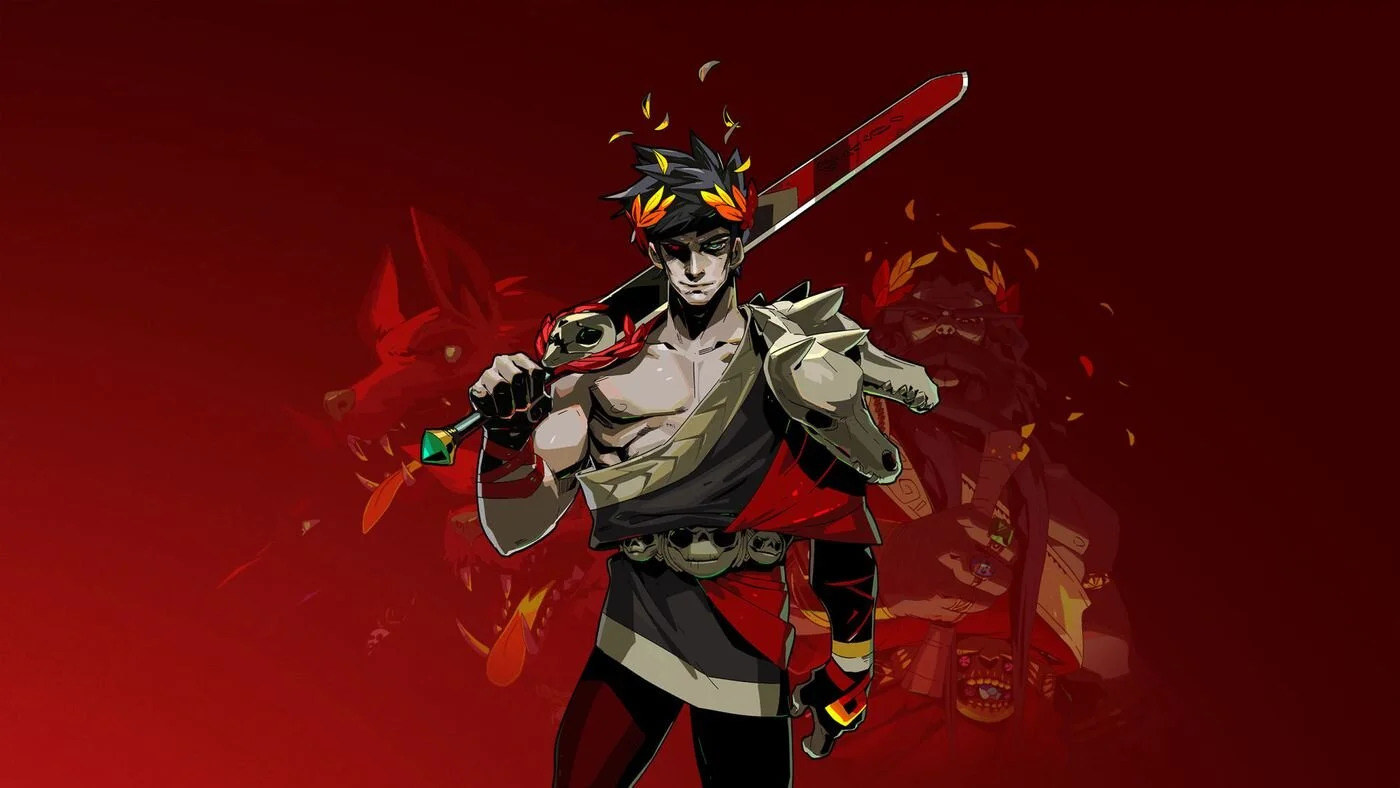The Rogue-likes Making Death An Audio Delight
Before 2020, I really wasn’t the biggest fan of the rogue-like. To start, the name is too confusing. What does it mean? What’s the difference between a rogue-like and a rogue-lite? Is this different from a metroidvania? All I know for sure is that I keep dying all the time, and it’s INFURIATING. Nevertheless, the hellstorm that was 2020 shifted my whole perspective on the maddening genre. As our lives got twist-turned upside down, the repetitive action of diving in, exploring, annihilating, and dying became a comforting schedule in an otherwise scheduleless world. However, the thing I feared most about the genre was getting sick to death of the music.
We have all had that situation in a game where we get stuck on a level or boss battle and are then destined to constantly listen to the same piece of music over and over again until we either win, or give up. Many an excellent soundtrack has been ruined for me by having to endure the same song over and over again (with the exception being “Rivers In A Desert” from Persona 5 because let’s be real that song bangs HARD). So, a whole genre based around the act of dying and trying again feels like a recipe for disaster for any composer looking to create a score. Or so I thought.
Hades - Sounds Of The Underground
Hades is an obvious place to start when looking at the impossible popularity that rogue-likes have had in the last year. Supergiant’s magnum opus was released in early access in 2018, but its full 1.0 release in September 2020 quickly rocketed the Grecian epic to the very top of people’s Game Of The Year choices, and for good reason. The storytelling is brilliantly paced and designed in such a way that death becomes a story mechanic, rather than a roadblock toward the next objective. The action is snappy and addictive, and the characters are sexy, well-acted, multi-faceted, nuanced, and sexy. Acting as the bedrock for all of this brilliance is an amazing soundtrack from Supergiant’s resident sound guru and Zagreus voice actor, Darren Korb.
In an interview with noclip, Darren explains that the sound design for Hades is broken down into each of the game’s main hubs, allowing each section of the underworld its own unique colour palette of instrumentation and audio design. Not only does this cement a clear identity for each of the game’s levels, but also installs a sense of audio exploration and discovery that is on par with the discoveries being made within the game. Within these separate sections, Darren cleverly infuses traditional Grecian folk instruments like bouzouki with modern musical inspirations ranging from elegant Radiohead progressions to chugging metal licks to drive the sonic narrative forward. Each section’s motif ramps in intensity as the action unfolds, leading to a climax that amalgamates everything into one epic boss track. If that wasn’t clever enough, the final confrontation takes cues from across all of the game’s vast musical library to make the final encounter truly epic.
Darren has created a sound board with Hades that marries the complicated blend of familiarity and discovery perfectly, allowing every journey back down the River Styx to be a joyous one.
Risk Of Rain 2 - Coming Back To Life
Another game to be released to 1.0 in 2020, Hopoo Games’ Risk Of Rain 2 improves on the original in every way imaginable, to the point where the frenetic planetary exploration has now been moved into a 3D space. Alongside all of this mechanical and graphical upgrades comes a new and improved soundtrack from series composer Chris Christodoulou. When approaching the science-fiction themed game, Chris took a novel approach from the tried and tested formula of hyper-synthesized drones and minimalist instrumentation, instead incorporating this whilst looking outwardly at bands that took a key inspiration from the space boom of the 1960s and 70s, such as Ziggy Stardust and Pink Floyd.
In an interview with Laced Records, Chris talks about how the evolution from the 2D pixel art of the original Risk Of Rain to the 3D, more polished graphical design of Risk Of Rain 2 had to be represented within its score. Chris’ score has to be dynamic, of course, as the actions of the character on screen will drastically affect how the music will dance along with it, but that doesn’t mean that Chris played it safe with his music. Each compartment of music stands up to scrutiny, something not often found within the sci-fi space thanks to the over-reliance on the aforementioned minimalism. Of course, the Daft Punk-inspired heavy synth melodies and pads can be found, but they are always written with direction and intention. No piece exemplifies this more than the title track, which builds and builds to a crescendo of rip-roaring guitar licks and a cacophony of different pads and basslines all driven forward with an excellent beat.
Taking a progressive rock influence installs a sense of something bigger than the sum of its parts. It would be easy to compare this to Pink Floyds Dark Side Of The Moon as an obviously space-inspired concept album, but Risk Of Rain 2 reminds me a lot more of The Wall’s “Comfortably Numb” or Wish You Were Here’s “Shine On You Crazy Diamond” in the way it logically builds on itself before becoming a sonic supernova. It’s epic stuff that never gets tiresome of experiencing time and time again, no matter how many space beetles consume your useless body.
Crypt Of The NecroDancer - Murder On The Dancefloor
By the time of this article’s publication, Crypt Of The NecroDancer will be coming up to its 6th birthday, and its unique position amongst rogue-likes keeps it very much within the genre’s zeitgeist. Crypt Of The NecroDancer combines the rogue-like with a rhythm game, making the music not only paramount to the overall experience, but an intrinsic mechanic to how the game is played. Thankfully, the team behind the hit game (Brace Yourself Games) hired the incredibly accomplished Danny Baranowsky of Super Meat Boy and The Binding Of Isaac fame. Danny’s experience working on both rogue-like titles as well as games with an old-skool aesthetic (Meat Boy and Isaac harping back to the lofty days of internet flash games) gave him all the tools to create a soundtrack that both married with NecroDancer’s 8-bit art style and its dungeon-crawling game play. What Danny created with NecroDancer was a masterpiece.
In any other setting, Danny’s choice of heavily synthesized 8-bit inspired melodies, carried through by a thumping, earth-shattering club beat would be ostentatious at best and at worst derailing for the overall experience. However, NecroDancer relies solely on the beat to tie together its narrative direction and gameplay. Without that heavily emphasized pulse running through the game’s veins, playing the game would be taxing and cumbersome. Instead, having to connect to the rhythm in such an important way allows Danny’s music to resonate through you, rather than at you. What would have been incredibly loud, busy and distracting becomes driven, focused, and energetic. NecroDancer’s focus on its music makes each moment of the game, whether it be a boss battle or exploration, feel like an important moment. It gives every ounce of the game meaning and purpose, and it soon becomes an intoxicating experience.
Beyond the music’s mechanical use, Danny has created motifs within each track to let them stand out against one another. This has the effect of breaking-up the moment-to-moment gameplay as well as making the OST a delight to listen to outside of playing the game. Where a track like “Crypteque” will incorporate an 80’s “New Romantic” etherealness alongside its forward momentum, “Konga Conga Kappa” will bring forward latin polyrhythms that dance between the core rhythm. It’s an incredibly accomplished soundtrack that has kept Crypt Of The NecroDancer relevant even after all this time. A true masterclass in the importance of music to the overall gameplay experience.
MICHAEL LEOPOLD WEBER
Michael is a freelance journalist currently living in West Japan. Though he has a degree in music from The University Of London, he still often plays out of time (shouting "it's close enough for jazz" whilst it happens). When he isn't obsessing over II-V-I's, Michael can be found digesting a whole range of video games from farming sims to FPSs. He also loves tea a little bit too much.

